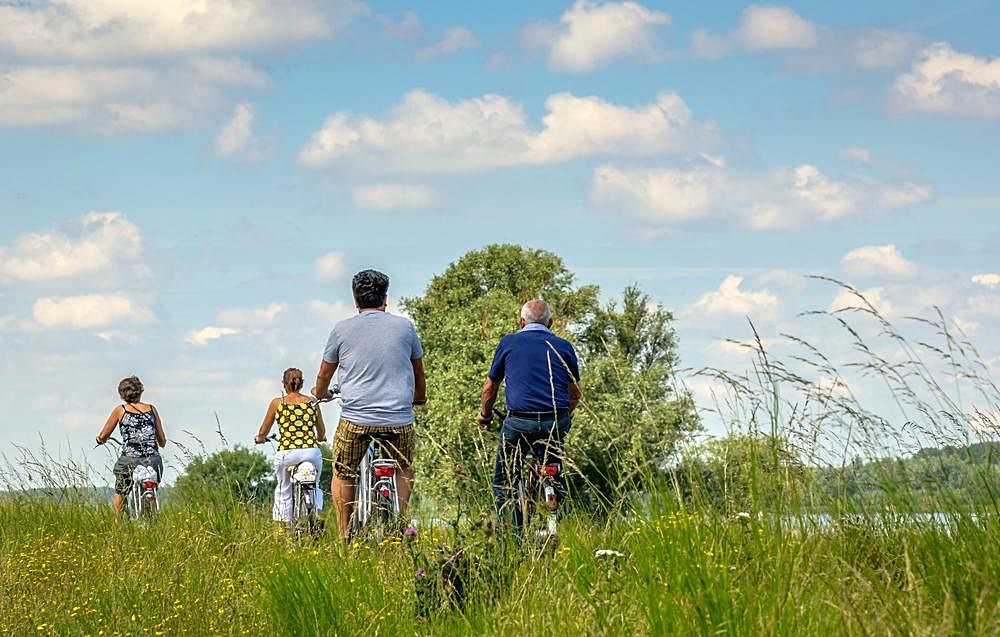In the charming town of Vamlingbo, there is a picturesque thatch-roof barn, surrounded by beautiful lilacs. In the farmyard, you can find a cozy bakery café offering delicious saffron pancakes and strong Swedish coffee. This delightful mid-morning tradition is known as fika. Just a short distance away, a 700-year-old church stands with its two-foot-thick stone walls adorned with evocative murals depicting saints, sinners, and the universal bond that connects us all. One of these murals portrays the Archangel Michael passing judgment on the Holy Roman Emperor Henry II, who passed away in 1024. Although the mural tells a historical story, it remains unknown to us what fate awaited Henry in the celestial realm.
A few miles from the town, amidst the pine forests, you can spot charming Gotland ponies that gather like sturdy ghosts under the shimmering amber light filtering through the trees. The hayfields are a riot of colorful early summer poppies, and the fields are bordered by elegant ivory-shafted birch trees resembling whitewashed pickets. If you look closely within the shadowy areas beneath the sturdy oak trees, you might discover standing stones, ancient tablets inscribed with runes that may hold neighborhood gossip or royal proclamations. Perhaps, they bear witness to a peaceful existence rather than tales of conflict.
As you venture along the smooth asphalt back lanes, you can bike for an hour without encountering a single car, enjoying the serene atmosphere. Walking along the flower-strewn shoreline, you can immerse yourself in the gentle ripples of the Baltic Sea, which rhythmically tap against the shimmering silver sand like tambourines. The daylight lasts until past 11 p.m., gradually giving way to a brief, peaceful darkness before the sun’s return at 3 a.m. The light that bathes the island during this time is enchanting, glistening like crystals and providing a sense of comfort.
Seagulls soar and nightbirds sing throughout the day, as the absence of true nightfall blurs the boundary between day and night.
“Do you think we will ever come across a car?” I rhetorically asked my biking companion.
It was a rhetorical question indeed, as we had only encountered two cars thus far during our exploration of the island.



This enchanting island lies in the midst of the Baltic Sea.
To the west lies Sweden, a nation that has held dominion over Gotland for over five centuries. A short 40-minute flight from Stockholm or a three-hour ferry ride from Nynashamn will bring you to this captivating island.
Not too far away lies Denmark, a kingdom that once coveted Gotland and briefly possessed it in 1361. However, it eventually relinquished control, allowing the island to become a pirate stronghold. Gotland was later reclaimed by Sweden in the 18th century, only to be temporarily lost to Russia in 1808. However, Sweden swiftly regained control of the island about a month later, and it has remained under Swedish rule ever since.
Why was there such covetousness over this island? It is not solely due to its breathtaking beauty. Gotland is the sole prominent standalone landmass within the Baltic Sea.
That is why, when you hike uphill in Visby, the capital of Gotland, the most breathtaking panoramic views are from the old tall stone watchtowers that were originally built for defensive purposes. From these vantage points, you can overlook the harbor and the sea lanes that were once vital for international commerce centuries ago.




Visby served as a prominent port and political center during the time of the Hanseatic League, the Baltic region’s equivalent of Venice’s hegemony in the Mediterranean. The town’s prosperity during this period was profound. The history museum in Visby proudly showcases the Spillings Hoard, a Viking silver treasure discovered over 1,200 years ago. This precious hoard consists of 14,300 coins, 286 bracelets, and other trinkets, weighing a total of 148 pounds. The coins’ origins unveil the island’s rich trade history, as the majority are Persian or Byzantine coins.
Today, Gotland holds significant potential, just as it did 1,200 years ago when Viking ships sailed past on their way to invade Russia. Possession of Gotland allows for a commanding view over all four quadrants of the Baltic Sea.
On the island, the locals make the most of their land and resources. While relishing a slice of warm bread slathered in rich golden Swedish butter at a local countryside restaurant, I inquired about its delicious taste. The baker gestured towards the open back door, revealing a lush green field of grain. I learned that the bread was made using heirloom spelt, an ancient variety of wheat.
“Is this wheat as old as the Spillings treasure?” I curiously asked.
The baker amiably nodded, replying, “Oh, much older.”



From atop a stone cairn, one can witness peace and serenity extending into the distance, transcending time itself. There are no Viking galleys, clipper ships, or aircraft carriers to be seen. Instead, the focus shifts to the windmills and pines, the gentle presence of sheep and vibrant poppies, and the majestic birch trees and ancient standing stones. Gotland reminds us that history and beauty manifest in various forms within our complex world, and this peacefully paradoxical place is truly rare.
Discover more from Tension News
Subscribe to get the latest posts sent to your email.

